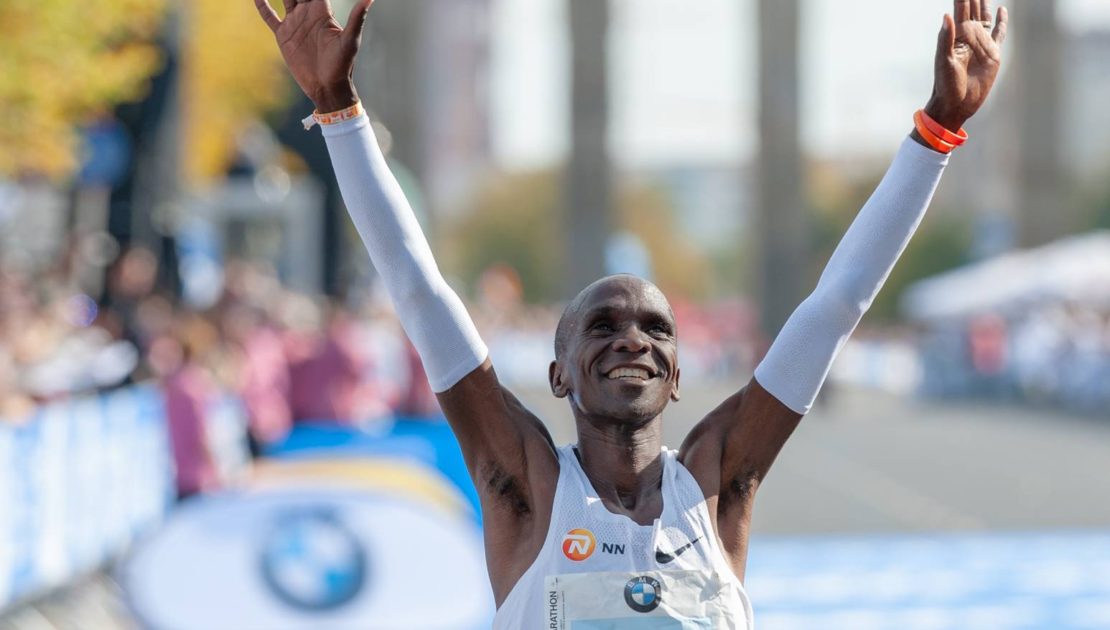The Obliteration of Impossible: The Lessons of Kipchoge, Kosgei & Roger Bannister
- October 17, 2019
- Posted by: Joseph Deitch
- Category: Uncategorized

Humanity has a way of scoffing at the word “impossible.” There was another example of it this week.
Eliud Kipchoge, a gold-medal Olympian from Kenya, just broke a barrier that was once thought impenetrable: The two-hour marathon. In a Vienna event designed to test the limits of human endurance, Kipchoge crossed the finish line in a stunning 1:59:40.
As if that wasn’t enough, fellow Kenyan Brigid Kosgei finished the Chicago Marathon in a women’s world-record 2:14:04 – a pavement-scorching time that demolishes the previous record by 81 seconds.
Oh, and she happened to do it the very next day. So what was on her mind as she was embarking on this historic run?
According to the New York Times, it was Kipchoge’s accomplishment. “I kept saying, ‘Tomorrow is my day,'” said Kosgei. “I wanted to be the second Kipchoge — the Kipchoge for women.”
This one-two punch at the putative limits placed on human beings is a victory for the sport of running. It’s also a good reminder: Human beings have a way of obliterating obstacles, even if they seem insurmountable at first.
This is what we do. And with each step forward, we spur each other to even greater achievements.
For his part, Kipchoge referenced another icon of running during one of his interviews: “It has taken 65 years for a human being to make history in (this) sport,” he said, “after Roger Bannister made history in 1954.”
Bannister, of course, was the legendary British runner who was first to eclipse the four-minute mile. Scientists at the time believed that the human body had inherent limits and couldn’t break the four-minute barrier. They thought it was impossible.
Bannister apparently disagreed with their definition of that word.
And when he finished a race with a time of 3:59.4, he made history.
Suddenly, other runners seized on this new understanding. Within months of Bannister’s feat, others were breaking the four-minute mile as well. Today, elite runners consider it slow. The current record (3:43.13) is sixteen seconds faster than Bannister’s time.
Turns out, the human body was more impressive than those scientists thought. Or at the very least, the human mind was.
Belief was essential to that feat. Bannister believed he could do it, and that belief infused everything he did in pursuit of his goal. Once the others saw that it was possible, everything changed. The other runners didn’t suddenly become dramatically better physically in those few months; the mental barrier had just been removed. As Bannister himself said: “It is the brain, not the heart or lungs, that is the critical organ.”
In other words: You’ve got to believe. This isn’t just some saccharine saying for a coffee mug or a bumper sticker. It’s an antecedent of achievement. As Woody Allen once said, “Eighty percent of life is showing up.” It’s belief that often gives us the necessary nudge to give something a try.
Turning back to Kipchoge: Things took an interesting and unexpected turn (at least to me) in relation to his feat.
As monumental as it was, it is technically not considered a record. He had a team of pacesetters who acted as a windshield running in a V-formation around him, for one thing. There was an electric car leading the way and also moving at a sub-two-hour pace. The course was also evened out ahead of time, maximizing his chances of eclipsing the two-hour barrier. So officially, it’s not a record.
It seems that for many, this diminishes the achievement somehow. For me? It enhances it… for one simple reason.
We never do it alone.
We have coaches, family, and friends who support us. The strangers who cheer us on. The Roger Bannisters of the world who set an example. The competitors who challenge us. (In Kosgei’s case, it was Kipchoge who helped spur her remarkable record 24 hours later!)
The point is: We always have help. And we all benefit from seeing someone re-define what’s possible.
Some of the best runners in the world ran along with Kipchoge. I’m sure they would love to have been the one to break that record, but they put their own egos in check in order to help him do it. He was the best of them, and they wanted to help Us – the big U – knock down that two-hour hurdle. People had been saying for decades humans weren’t capable of accomplishing this feat… and now, those people have been proven wrong.
Kipchoge is the most talented long-distance runner in the world. He did that.
But I love the fact that he did it with help.
So which barrier will be next? I, for one, can’t wait to find out.
A final note on limits – not those of legendary runners, though, but of yours and mine. I invite all of us (myself included) to think about challenging ourselves as these athletes did. Whatever barrier is currently in your way – whether it’s your first 5K, a particular injustice you want to fight, or something else on your someday-I’ll-get-to-that list. Why not use this as an inspiration to see what you’re capable of?
Let’s not accept what we’re told is possible. Listen, instead, to Eliud Kipchoge… the man who after accomplishing what no one ever had, had an important reminder for us all.
“No human is limited,” he said.